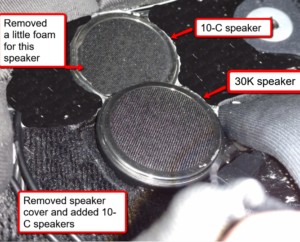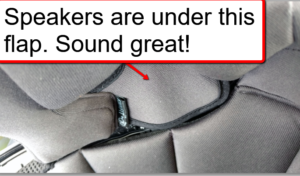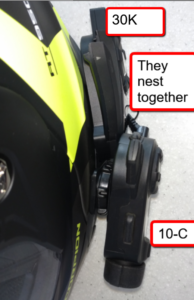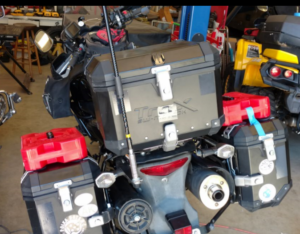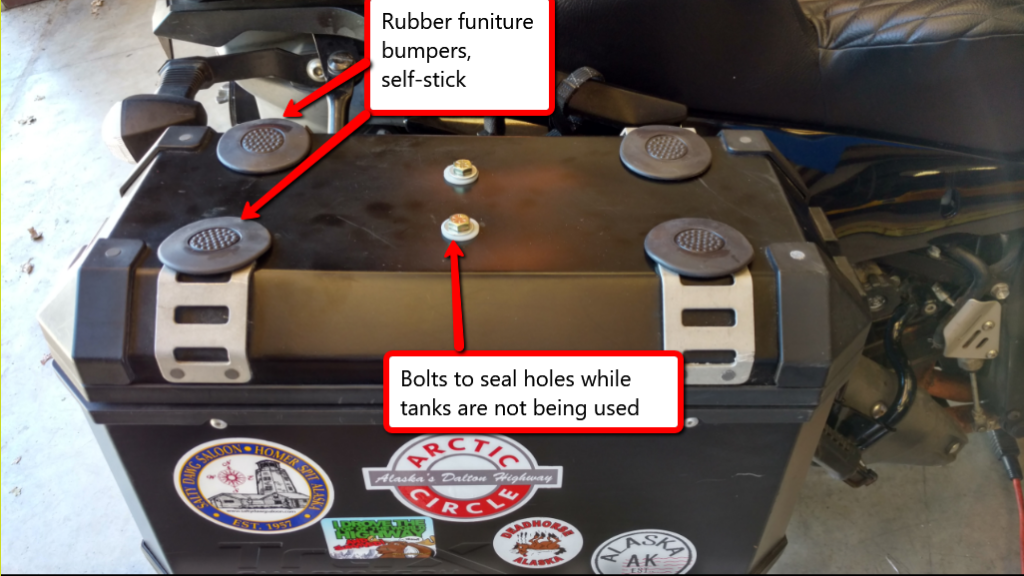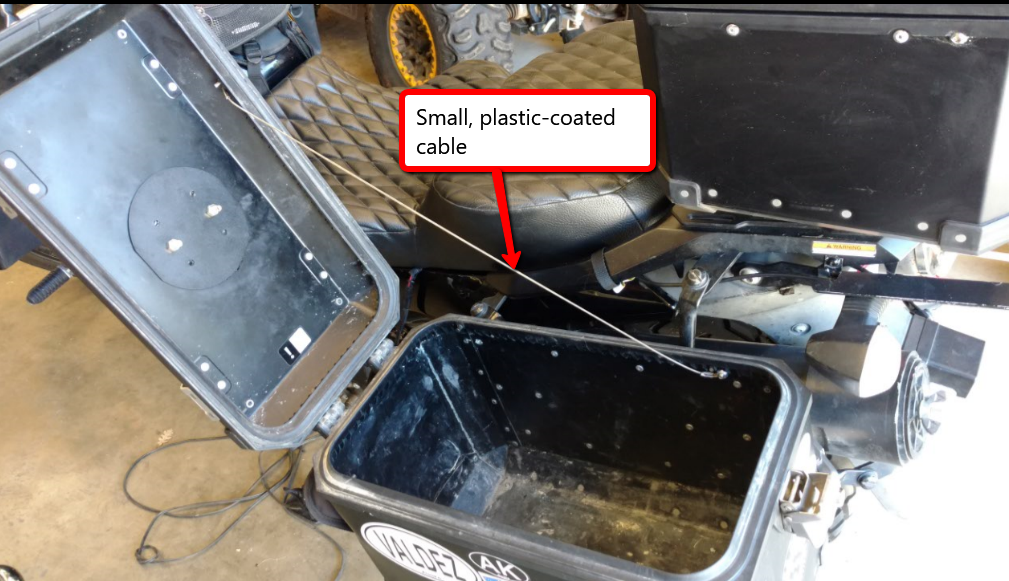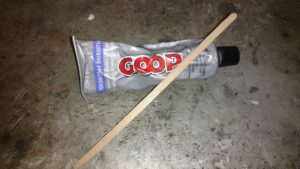This experience happened to me when I was a lot younger and exponentially more stupid than I am now. And that’s saying a lot.
What a great day! Here we were, the four of us in two canoes paddling down the scenic Nisqually River in Northwest Washington. I had scouted the river on the 4th of July, just a few days earlier and, as luck would have it, ran into two lady canoeists who had just come down the same stretch I was contemplating running.
They had taken their two-year-old son with them and another novice canoeist and had chosen this stretch because it was a “piece of cake.” One of the ladies said she had even become bored in some sections and they had paddled just for something to do. They said I could wait for their husbands, who were up getting the other car at the put-in if I needed more details.
“No, perfect,” I said. “This will be just right for taking my wife’s boss, who also was a novice, plus two other more experienced friends for a pleasant day of river running.”
So now we were running smoothly past some interesting log jams, threading our way past some narrow sections and even encountering a few little bits of “almost white water.” I was right, this couldn’t be more perfect.
We were remarking that this would be a good one to take our wives down on another day. I was hoping we would have another “severe clear” blue sky day like this one.
Gradually, more log jams appeared on the sides and the flow picked up a little. Just ahead the river turned sharply to the left with a good-sized log jam on the right. I stayed on the inside to avoid getting too close to the logs when a strong eddy began to spin the canoe to the left. “Paddle hard left, Don!” I said while I back-paddled right to correct the spin. The maneuver worked, stopping our spin and forward momentum and got us turned back the right way. “Hey, this is fun! I can do this!” I thought.
Meanwhile, Brian, my wife’s boss and Greg, a very experienced canoeist went around us in Greg’s canoe and negotiated the left turn perfectly. I watched them continue down the swift, narrow section between the log jam and the bank on the left when, suddenly they hit a submerged stump and just rolled over, dumping them and their gear into the cold Nisqually.
I immediately pulled off left, grounding our canoe on a gravel bar and we both jumped out watching our friends and their canoe being swept around another sharp turn to the right. Fortunately, there were no log jams in sight below them, so we hoped for the best. We were all wearing personal flotation devices (PFD’s).
Don and I jumped back in our canoe and shoved off, immediately discovering what caused our friends’ upset. The current here was flowing about 45 degrees cross river pushing us toward the same submerged obstacle our friends hit. I didn’t have enough room to miss it on the right where I wanted to go so I turned sharp left and went around it.
Whoops, another one dead ahead! “Paddle hard, Don!” I tried to power the canoe to the right but discovered that cross-current had become even stronger and we were going into a submerged stump sideways. “This is not usually good,” I thought.
We managed to get most of the canoe past the obstacle when a submerged root caught the stern and we did a slow roll into the swift water! Now we were the ones floating along with paddles, canoe, cooler and other flotsam being swept around the bend.
I remembered what I had read: “Hang on to your paddle, keep your feet up, don’t get in front of the canoe to avoid it pinning you against something, swim toward shore, if possible, save yourself first, then others, then your gear.”
We came around a bend and there were Brian and Greg crawling out on a little gravel bar. “Don’s behind me, looks OK. Whoa! The canoe is just behind me. I’m getting over to that bank and out of its way!”
I stood up when I was sure of my footing and just my legs were in the water and no part of my torso. Otherwise, the swift flow would just have pushed me on.
I saw the canoe lead rope within my grasp, grabbed it and started to pull the canoe, which was now downstream of me, toward the bank. No chance! It felt like a tow truck was pulling it the other way. It was either let go of the rope and my $1,830 canoe or get pulled back into the swift Nisqually. Bye-bye, canoe.
I waded down to the little bar where everybody else was while we watched the canoes disappear downstream. “Well, what now?” “There’s a vertical twelve-foot bank up out of here and all our gear is on it’s way to the Nisqually Delta without us.”
With only a moment’s hesitation, Greg jumped back into the river, going after his canoe. I thought, “Hmmm, the river looks pretty mild for quite a ways, and I can tell it’s quite a ways because our canoes look pretty small way down there. OK, can’t stay here, can’t go up the bank, so back into the river.”
After gathering some important stuff, like Don’s hat, the cooler (where’s the lid?) and still hanging on to my paddle, I jumped in, following Greg. Pushing the cooler ahead of me, I scissor-kicked my way through the water, trying to catch up to Greg and, hopefully, the canoes. Maybe this swift flow might slow down or eddy somewhere downstream and we could get the canoes back.
Looking back, I saw that Don and Brian were also floating down behind us. Then ahead I saw Greg’s canoe had come to rest on a small log jam in some quiet water just past a primitive boat launch site. Great! We’ll have at least one canoe to continue on in.” I could see that Greg was already up on the small logs, so I got to shore in this slower water, got out and discovered that the bank led to an old road past the brush. This road led to what looked like an Indian launch site for tending their gill nets. I’m glad they didn’t have any out just now, however, I could occasionally see some remnants of the nets still on the banks.
We all got together and managed to get Greg’s canoe up off the logs and onto the shore. No damage, even had their two paddles still inside.
We decided to let Greg and Brian take the canoe down this milder stretch while Don and I continued to walk down the little one-lane overgrown dirt road along the river. We agreed that, if someone spotted my canoe we would whistle or shout and see what we could do about getting it going again, also.
About 500 yards down the river, I heard Brain and Greg shout and heard their canoe ground against a gravel bar. Quite a bit of brush was between the road and the river, so I couldn’t see what was going on until I followed their voices through the stinging nettles back to the river.
There was my canoe, pushed tight up against a large, fallen Maple sweeper (a tree sticking out into the river where it will “getcha.”) The canoe was almost completely submerged with the full force of the swift river pushing on its side.
I carefully walked out on one of the four large horizontal trunks of what used to be a majestic tree and worked my way to the canoe. This involved walking on a 12-inch diameter submerged branch for the last ten feet, holding on to other branches while the water swirled around my feet. Not a fun place to be, but carefully done it was reasonably safe. (I think I would compare it for safety to crossing a freeway at rush hour, on foot, while trying to hold two angry cats fighting with each other…with fighter interceptors taking off 100 feet over your head for noise level.)
Anyway, upon reaching the canoe, I found that no amount of pushing or pulling had the slightest effect on it. No wonder, it has been estimated that a current such as this could exert up to four tons of pressure on a sideways canoe.
The canoe was on its side with the river pushing on the bottom, creating a little dam. I could stand inside, downstream, sheltered from the swirling water. Meanwhile, all around me, the swift water is roaring by.
I’m thinking, “OK, we aren’t going to get it this way. Better just try to get the waterproof bag that’s still attached.” It had our wallets, glasses and whatever still in it, I hope. I have to reach way down in that water to get it. Water’s up to my nose now and I can just feel it. Unhooking the strap now. Darn! The bag is pinned to a branch and won’t budge! OK, I’ll reach inside and try to get the stuff out. Hard to do it with it in over two feet of water. OK, got a tennis shoe. I’ll stick it in this limb crotch and go after some more.
Can’t reach further without getting my whole head underwater! Enough of this. Here comes Greg. Glad he’s as crazy as I am.”
We discovered that our combined efforts were just enough to budge the canoe enough so that I could free the bag. Great! Now we had money, credit cards and (wet) checks to get materials to free the canoe.
New plan. Don and Brian will walk out the little road to the main highway so we would know how to get back to the canoe. Meanwhile, Greg and I would take his canoe down-river to the motorhome parked at the take-out, come back and pick them up.
Hoping we would see each other again, Don and Brian set out on the road while Greg and I started once again down the “piece of cake” Nisqually. The remaining river proved interesting, with sandbars, log jams, sweepers, tricky currents, (Who were those people I talked to on July 4th, anyway!) and deceptive twists and turns. We made it back to the takeout, loaded Greg’s “survivor” canoe (it is a nice $400 canoe) and headed back up the river.
We found Brian beside the road, having walked three miles to get there. Don had hitched a ride to go upriver and get the drop-off vehicle we had left there. He probably didn’t have complete faith in our making it back to take him there.
Moving back up the road, we eventually came upon Don driving the drop-off vehicle back. Since we were on the Nisqually Indian reservation, we sent Don and Greg off to find keys to the locked gates back to the river while Brian and I went to get supplies to retrieve the canoe. Off we went in separate directions again.
Brian and I found a rental outfit in nearby Yelm which would sell us the 150 feet of rope I wanted, a come-a-long (winch thing) and oil for the chainsaw I carried in the motorhome. They also had a phone so Brian could call his pregnant wife, Molly, and tell her we would be just a little late. This was before we all had mobile phones, BTW. I had already called my Marcy from a store before picking up Brian and she had called the other wives, so we bought ourselves extra time. Naturally, we didn’t tell them everything, that wouldn’t have been too smart just now.
The guys at the store were very helpful while they took my money for the $150 come-along plus the other stuff (remember, an $1,830 canoe!) Yes, they told us about the four people they knew of who had been killed last year on that same stretch of the Nisqually we dumped on. They told us that one person had still not been found! Hmmm.
Brian and I immediately decided that there might be a few people we might forget to tell about the other four unlucky people, like our wives!
Brian and I went back to the first gate, parked the motorhome and waited for the others. Hmm, here comes a police car. Says Nisqually Tribal Police on it. Turns out that Jim Parsons and his partner just happened to be patrolling down at this end of this little dirt road and wanted to know if we needed anything. We told him what was up.
Jim disagreed with the people in the tool rental agency. He said eight people were killed last year on this stretch of the Nisqually. Hmmmmmmmmmm. I’m starting to get a better sense of just how dumb I really was.
Just then, Don and Greg showed up and had actually found a guy with a key to both gates, saving us over a mile of walking down to the river. A nice Nisqually Indian in a pickup arrived, opened the gates and a procession of the pickup, the motorhome, the drop-off vehicle and the police car proceeded on through. Dropping off the motorhome, the rest of us went on down to the river.
The canoe was still there, of course, stuck as firm as ever. Greg and I walked the tree trunk and branches back out to it and, with Greg steadying me, I tied one end of the long rope to the bow. Next, we hooked the other end to the 3000-pound capacity come-a-long attached to a tree as far upstream as we could get it.
Don winched in the slack and put as much of a load on the rope as we dared, still no budging. OK, out with the chainsaw. With Greg once again steadying me, I began cutting away the part of the tree holding the canoe. This was hairy. We were standing over a swift, killer river sawing off one of four tree trunks thicker than my blade is long, wondering if the whole tree will shift when this part goes.
I was able to reach under and get the trunk sawed off which fell into the river OK. When the tree trunk went, the canoe was free to move downstream, tethered to the rope. It swung toward the bank as planned, however, the stern caught against other parts of the tree putting the canoe once again sideways to the swift current. This time the open part faced upstream rather than down forming a big scoop to the swift current.
The force of the water was too much, even for the kevlar (they make bullet-proof vests out of it). The canoe buckled in half, splintering the wooden rails. This allowed it to swing further toward the bank into slower water while Don kept winching the bow upstream. As the canoe pointed straight upstream and unfolded, we were finally able to get it to shore and out of the water.
While Nisqually River water poured out through a foot-wide hole near the bow, Brian said something about it being a shame for such a beautiful canoe to come to this. I said, “Well, it’s self-bailing now, anyway.”
While we don’t know if the Nisqually was any different the day we did it or not, we now know that, no matter what the “book” or what someone who ran the river last week says, check with local people who see the river on a regular basis. Log jams and dam releases can change the flow and nature of a river from a fun place to a killer environment.
I would never recommend anyone attempting the recovery of anything in swift waters until all options have been very carefully considered. Even small mistakes can get deadly in a hurry! We were just lucky that day.
Since then we have learned how to slow and even stop a canoe in very swift water by proper back-paddling. Then we can move the canoe sideways in what is called a “ferrying” maneuver to go around obstacles. We have also learned many other canoe operating tricks and feel we still have a lot to learn.
Right now, we are enjoying camping on nice, quiet lakes. If we do choose to go down another river, you can be sure I will know considerably more about it than I knew about the Nisqually that “Perfect day in July.”
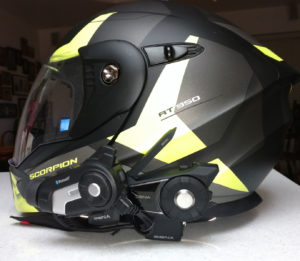 A quandary I was in. I like communicating via Bluetooth intercom with my riding buddies and love taking videos of our rides. The Sena 10C camera/intercom combination works well for me. I also love the new Sena 30K “mesh” intercom for its ability to hook up with 10 or more other 30K intercoms. The 10C is limited to only three. I wish Sena made a 10C-like camera with the ability to “mesh intercom” with lots of riders like their 30K model!
A quandary I was in. I like communicating via Bluetooth intercom with my riding buddies and love taking videos of our rides. The Sena 10C camera/intercom combination works well for me. I also love the new Sena 30K “mesh” intercom for its ability to hook up with 10 or more other 30K intercoms. The 10C is limited to only three. I wish Sena made a 10C-like camera with the ability to “mesh intercom” with lots of riders like their 30K model!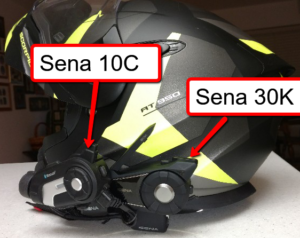
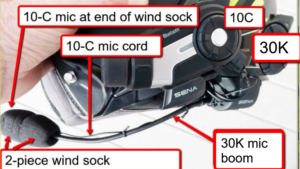 For the 30K, I used the plug-in boom mic and for the 10C I used the wired small mic. For a mic holder, I used two of the windsocks supplied with the 10C mounting kit. I cut the top off one, making it into a sleeve and slid the big 30K mike through it along with the wired 10C mic. Then I put the 10C mike in a complete windsock and slid it onto the 30K mike. The 10C mike is in the end. Both work very well when close to your mouth…the closer the better.
For the 30K, I used the plug-in boom mic and for the 10C I used the wired small mic. For a mic holder, I used two of the windsocks supplied with the 10C mounting kit. I cut the top off one, making it into a sleeve and slid the big 30K mike through it along with the wired 10C mic. Then I put the 10C mike in a complete windsock and slid it onto the 30K mike. The 10C mike is in the end. Both work very well when close to your mouth…the closer the better.